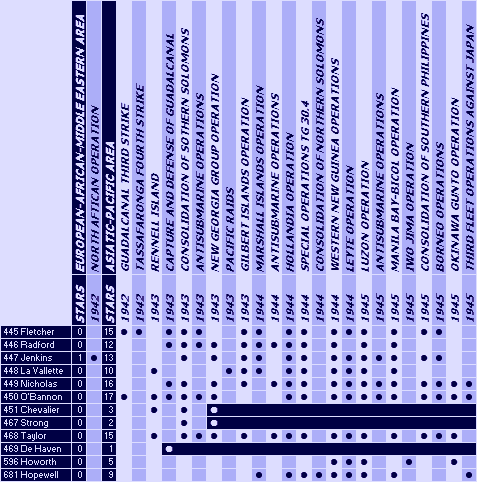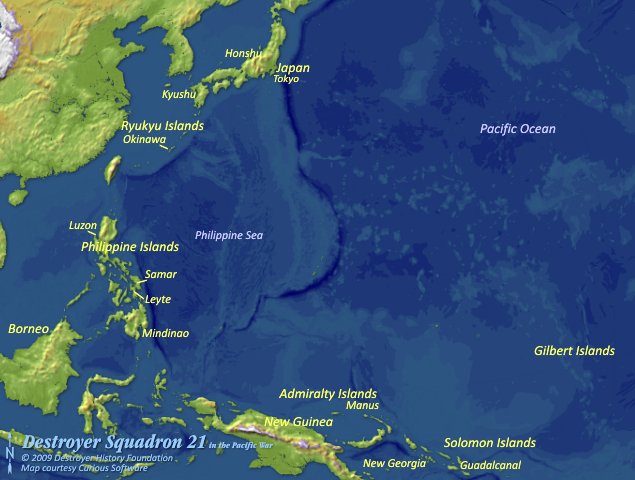
Destroyer Squadron 21 World War II Operations

Table includes De Haven, which was lost before assignment to a squadron, and replacement ships Howorth and Hopewell. Ross earned no service stars while attached to DesRon 21.
Following its organization as a squadron in March 1943, there quickly developed an esprit de corps among officers and crews, knowing that they had been and were going to be the lead ships in surface engagements with the best of the Imperial Japanese Navy. In fact, to have the crews of ships in Tulagi Harbor and Purvis Bay “man the rails” to cheer DesRon 21 DDs returning from a night action up the “Slot” was pretty heady stuff.

“Give my regards to Broadway.
“On your detachment from the South Pacific fighting forces, I wish you Godspeed. Your habit of getting into winning scraps with the Japs has made history ... DesRon TWENTY-ONE always will be remembered when Cactus, Munda, Kula, Vella and the Slot are mentioned. You may be sure I will welcome you back with open arms anytime, any ocean.
“Halsey
“Hearts and Flowers”
In October 1943, the squadron was ordered north to the central Pacific to join the fast carrier task forces in the Gilbert and Marshall Islands campaigns. Later it was to see action in most Pacific naval operations, ending with a leading role in the victorious entrance to Tokyo Bay for the Japanese surrender, September 1945, before being disbanded.
Through these three years at war, Fletcher (DD 445), Radford (DD 446), Jenkins (DD 447), La Vallette (DD 448), Nicholas (DD 449, flagship), O’Bannon (DD 450), Chevalier (DD 451, sunk), Strong (DD 467, sunk), Taylor (DD 468), De Haven (DD 469, sunk) and replacements Hopewell (DD 681), Howorth (DD 592) and, in 1945, Ross (DD 563) from DesRon 56—earned three individual Presidential Unit Citations and one Navy Unit Commendation in addition to 120 engagement stars on their collective Atlantic and Asiatic-Pacific Campaign ribbons while attached to the squadron or its predecessor “Cactus Striking Force” and left a “legacy of courage and fighting skill” that inspired the cold war-era Destroyer Squadron TWENTY-ONE insignia: a Rampant Lion with a trident, sweeping the seas beneath the Southern Cross, and the motto “Solomons Onward.”
